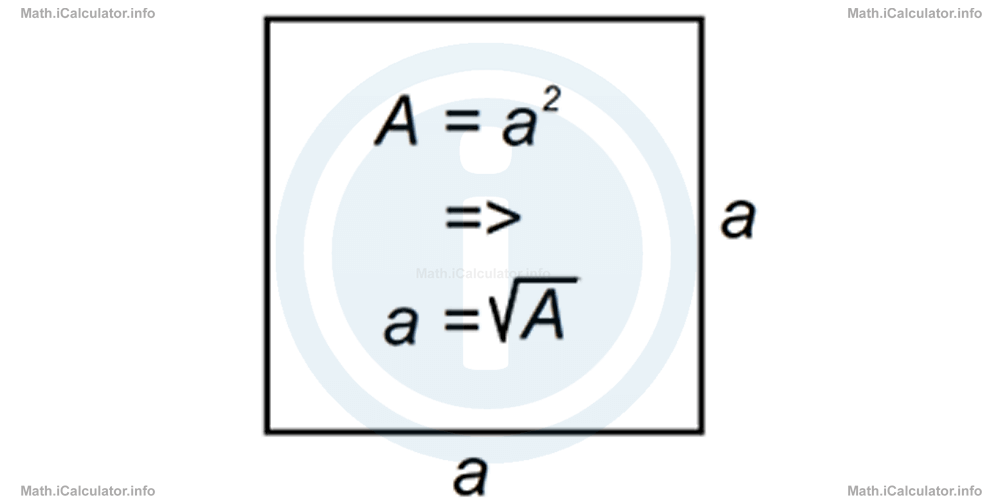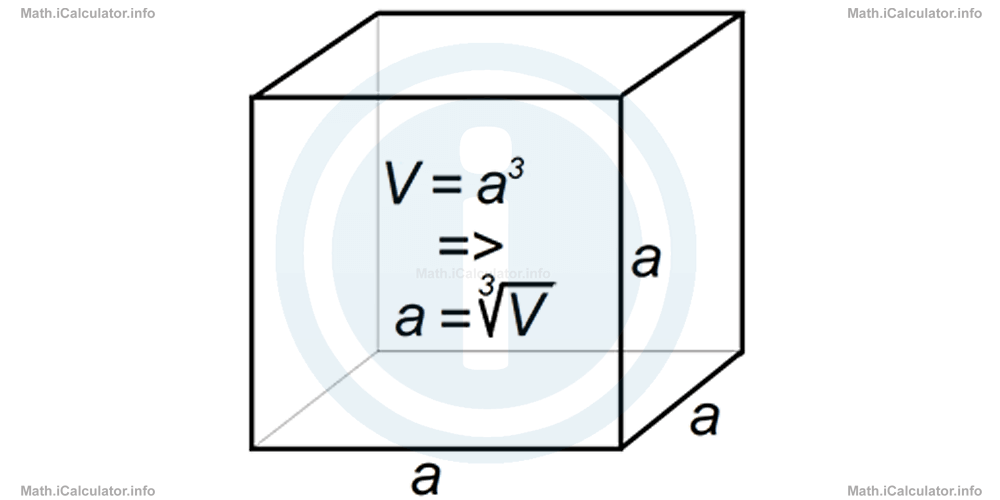Menu
Math Lesson 7.2.1 - The Meaning of Roots. Square and Cube Root
Please provide a rating, it takes seconds and helps us to keep this resource free for all to use
Welcome to our Math lesson on The Meaning of Roots. Square and Cube Root, this is the first lesson of our suite of math lessons covering the topic of Roots, you can find links to the other lessons within this tutorial and access additional Math learning resources below this lesson.
The Meaning of Roots. Square and Cube Root
So far, we have learned far that the four basic arithmetic operations (addition, subtraction, multiplication and division) are related to each other in such a way that they are the inverse of each other two by two. In simpler words, subtraction is the inverse of addition and division is the inverse of multiplication.
When dealing with arithmetic or algebraic expressions, we have also dealt with powers, as a shorter way to calculate recurrent multiplications of the same factor by itself. Hence, logically, there must be an inverse operation of raise in power as well. And the truth is that such inverse operation does exist and is called finding the root of a number.
By definition, the nth root of a number is a new number that when multiplied n times by itself gives the original number.
The symbol we use to represent roots is (√). The nth root of a number x is symbolically written as √x. As a special case of roots, we can mention the 2nd root of a number, known as the "square root". In the case of square roots, the index n = 2 is not written but implied, just like the 'plus' symbol before positive numbers.
The name 'square root' originates from geometry, where the area of a square is calculating by raising the side length in the second power. Therefore, when the area of a square is known, we calculate the side length by taking the square root of the value representing the area, as shown in the figure below.

(The symbol ( => ) means 'implies' in math.)
A positive number has two square roots: one positive and another negative. Thus, for example we write
because
and
Example 1
Calculate the square root of the following numbers:
- 49
- 81
- 196
- 361
Solution 1
- We have √49 = ± 7 because (-7)2 = (-7) ∙ (-7) = 49 and ( + 7)2 = ( + 7) ∙ ( + 7) = 49
- We have √81 = ± 9 because (-9)2 = (-9) ∙ (-9) = 81 and ( + 9)2 = ( + 9) ∙ ( + 9) = 81
- We have √196 = ± 14 because (-14)2 = (-14) ∙ (-14) = 196 and ( + 14)2 = ( + 14) ∙ ( + 14) = 196
- We have √361 = ± 19 because (-19)2 = (-19) ∙ (-19) = 361 and ( + 19)2 = ( + 19) ∙ ( + 19) = 361
Obviously, the square root of negative numbers does not exist in the set of real numbers, as we cannot find any negative number which, when raised at the second power, gives a positive value. Not only is this is true for square root but for all even roots, as we can pair them two by two.
Another root that has a geometry-based meaning is the "cube root" of a number. It represents a new number which when raised to the third power gives the original number. We write the index 3 at the upper left part of the root symbol to highlight the fact that we are dealing with the third root (or cube root) of a number.
The term 'cube root' derives from the fact that the volume of a cube is calculated by raising its side length to the third power. Therefore, if the volume is known, the side length of a cube is obtained by calculating the cube root of volume.

For example,
∛125 = 5 because 53 = 125
∛(-64) = -4 because (-4)3 = -64
etc.
From the above examples, it is easy to notice two things:
- The cubic root of a number is a single value, not two numbers with opposite signs as in square root.
- Unlike in square root, the cubic root of negative numbers does exist and it is negative.
Example 2
Calculate the following roots.
- √-1
- √27
- √-216
Solution 2
- We have ∛(-1) = -1 because (-1)3 = (-1) ∙ (-1) ∙ (-1) = -1
- We have ∛27 = 3 because 33 = 3 ∙ 3 ∙ 3 = 27
- We have ∛(-216) = -6 because (-6)3 = (-6) ∙ (-6) ∙ (-6) = -216
More Roots Lessons and Learning Resources
Whats next?
Enjoy the "The Meaning of Roots. Square and Cube Root" math lesson? People who liked the "Roots lesson found the following resources useful:
- Meaning Feedback. Helps other - Leave a rating for this meaning (see below)
- Powers and Roots Math tutorial: Roots. Read the Roots math tutorial and build your math knowledge of Powers and Roots
- Powers and Roots Video tutorial: Roots. Watch or listen to the Roots video tutorial, a useful way to help you revise when travelling to and from school/college
- Powers and Roots Revision Notes: Roots. Print the notes so you can revise the key points covered in the math tutorial for Roots
- Powers and Roots Practice Questions: Roots. Test and improve your knowledge of Roots with example questins and answers
- Check your calculations for Powers and Roots questions with our excellent Powers and Roots calculators which contain full equations and calculations clearly displayed line by line. See the Powers and Roots Calculators by iCalculator™ below.
- Continuing learning powers and roots - read our next math tutorial: Standard Form
Help others Learning Math just like you
Please provide a rating, it takes seconds and helps us to keep this resource free for all to use
We hope you found this Math tutorial "Roots" useful. If you did it would be great if you could spare the time to rate this math tutorial (simply click on the number of stars that match your assessment of this math learning aide) and/or share on social media, this helps us identify popular tutorials and calculators and expand our free learning resources to support our users around the world have free access to expand their knowledge of math and other disciplines.